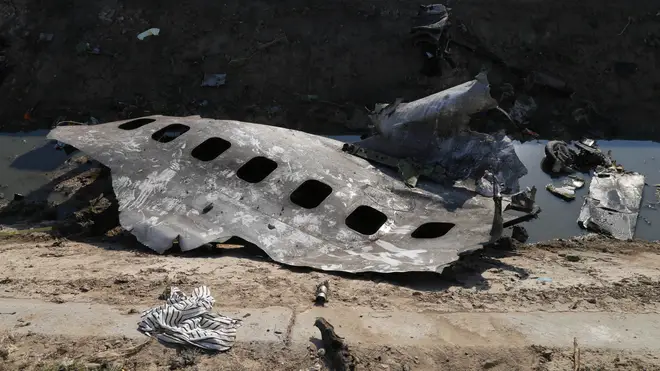
Richard Spurr 1am - 4am
12 July 2020, 12:07

Bad communication and a misaligned missile battery are to blame for the shooting down of a Ukrainian plane in January, say Iranian investigators.
All 176 people on board were killed when the passenger jet was brought down at the beginning of the year.
Poor communication between soldiers and their commanders for the Revolutionary Guard is one of the reasons the airliner was brought down, Iranian investigators have concluded.
A misaligned missile battery was also said to be responsible for the devastating incident.
Iran's report, released late on Saturday by the country's Civil Aviation Organisation, comes months after the crash.
The tragedy happened on the same night Iran launched a ballistic missile attack targeting US soldiers in Iraq over the American drone strike that earlier killed Guard General Qassem Soleimani in Baghdad.

Huge crowds gather to witness Qassem Soleimani's body being transported
At the time, Iranian troops were bracing for a US counter-strike and appear to have mistaken the plane for a missile.
The report detailed a series of moments where the shooting down of Ukraine International Airlines Flight 752 could have been avoided.
It said the surface-to-air missile battery that targeted the Boeing 737-800 had been relocated and was not properly reoriented.
Those manning the missile battery could not communicate with their command centre, they misidentified the civilian flight as a threat, and opened fire twice without getting approval from ranking officials, the report said.
"If each had not arisen, the aircraft would not have been targeted," the report said.
Western intelligence officials and analysts believe Iran shot down the aircraft with a Russian-made Tor system, known to Nato as the SA-15.
In 2007, Iran took the delivery of 29 Tor M1 units from Russia under a contract worth an estimated 700 million dollars (£555 million).
The system is mounted on a tracked vehicle and carries a radar and a pack of eight missiles.
The report did not say why the Guard moved the air defence system, though the area near the airport is believed to be home to both regular military and bases of the paramilitary Guard.
It noted that the Ukrainian flight had done nothing out of the ordinary up until the missile launch, with its transponder and other data being broadcast.
"At the time of firing the first missile, the aircraft was flying at a normal altitude and trajectory," the report said.
The plane had just taken off from Imam Khomeini International Airport when the first missile exploded, possibly damaging its radio equipment, the report said.
The second missile likely directly struck the aircraft, as videos that night show the plane exploding into a ball of fire before crashing into a playground and farmland on the outskirts of Tehran.
The report put the blame entirely on the crew of the missile battery.
In recent months, Iran has repeatedly delayed releasing the aircraft's so-called black box, which includes data and communications from the cockpit leading up to the incident.
The US, under international regulations, has a right to be part of the investigation as the plane involved was a Boeing.
Iran is expected to send the black box to France on 20 July, when Ukrainian and French experts are expected to examine it.
The plane, en route to the Ukrainian capital of Kyiv, was carrying 167 passengers and nine crew members from several countries, including 82 Iranians, 57 Canadians and 11 Ukrainians, according to officials.